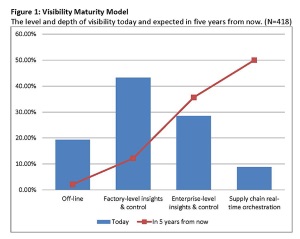
The up-coming Consumer Electronics Show (CES) in Las Vegas will be rife with interesting and hopefully some surprising applications of the Internet of Things (IoT) for consumers to relish in 2016, but ironically, it’s the adoption of IoT in industry that will help make these gadgets so affordable.
The Industrial IoT, or Industry 4.0, has taken a bit of a back seat to health monitors and door locks when it comes to the gee whiz factor. In reality, however, it’s the application of the IoT up and down the life cycle of a product, from design, development, manufacturing, production, and test, to shipping, sales, returns, and web-based, in-field failure analysis and firmware updates, that the true potential of IoT will be unleashed.
In a recent conversation with an executive of an IC company, we came to discuss how IC companies have become masters of improving and optimizing yield, and now it’s time to turn those skillsets toward helping product manufacturers do likewise. It struck me as a very good analogy, as that’s exactly what’s happening.
Sensors are being added at every node possible. Measuring motor vibration can tell when it’s starting to fail and it can be swapped out before causing a catastrophic failure — avoiding millions of dollars of downtime. More efficient lighting with motion sensors can lower capex, while better use and placement of IoT-enabled thermostats can optimize HVAC systems.
Lower capex will theoretically be passed on to the consumer, but improvements in test and analysis of data is where enormous gains will be achieved. Traditionally we’ve become accustomed to “batch” analysis, but now the goal is monitoring to the unit level.
Industry Week, a specialist in this area, did a Visibility Maturity Model to see how many manufacturers will be achieving this level of production visibility within five years. While one in five companies will admit they are completely offline now, this will drop to near zero in five years. In fact, half of all manufacturing executives surveyed expect to have visibility across the supply chain at this unit level. “Only 10% predict they’ll still be limited to single factory-level insights and control—a drop of 75% from today’s state of affairs.”
Traditional manufacturing is used to batch-level visibility, but unit visibility is coming, along with the gathering of data from every node along the manufacturing chain to increase yield and product reliability, while lowering production costs. (Image Source: Industry Week).
This is all very good for lowering cost of production of CES’s gadgets in the years to come, much to the delight of designers of those gadgets and the consumers’ pockets. But for designers and developers of sensors, motors, drives, real-time control, HVAC and wireless and wired communications components and systems, the IoTization of Industry is about to “PoP” in 2016 and bring boom years ahead.
It may have to start with suggested retrofits, but newer devices and equipment will increasingly be a part of the information chain needed to optimize yield.
Advertisement
Learn more about Electronic Products Magazine





